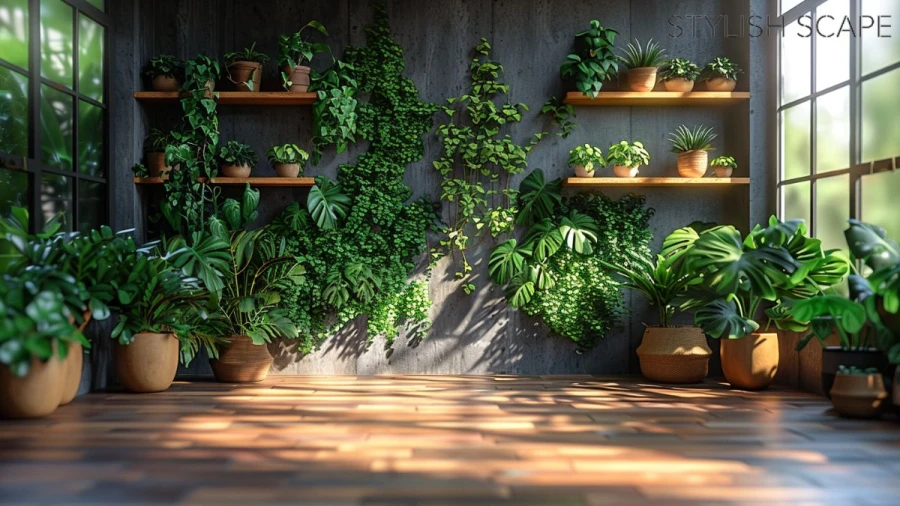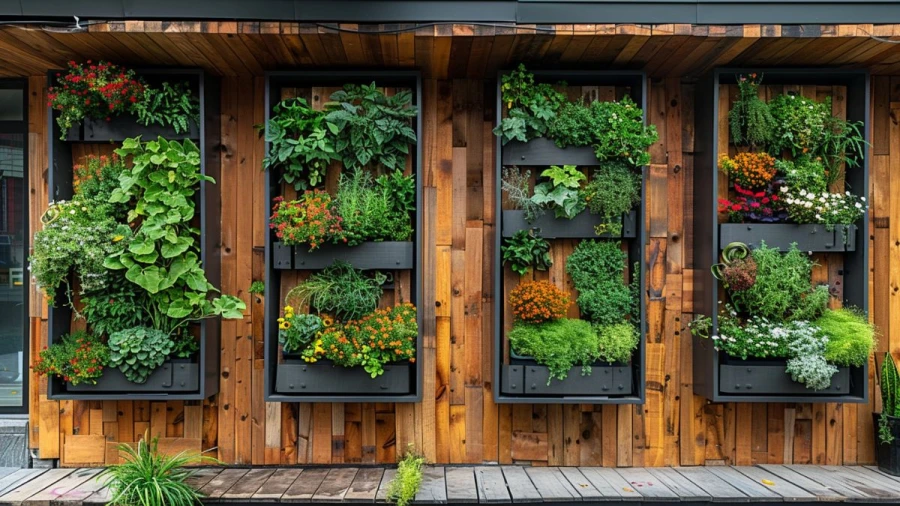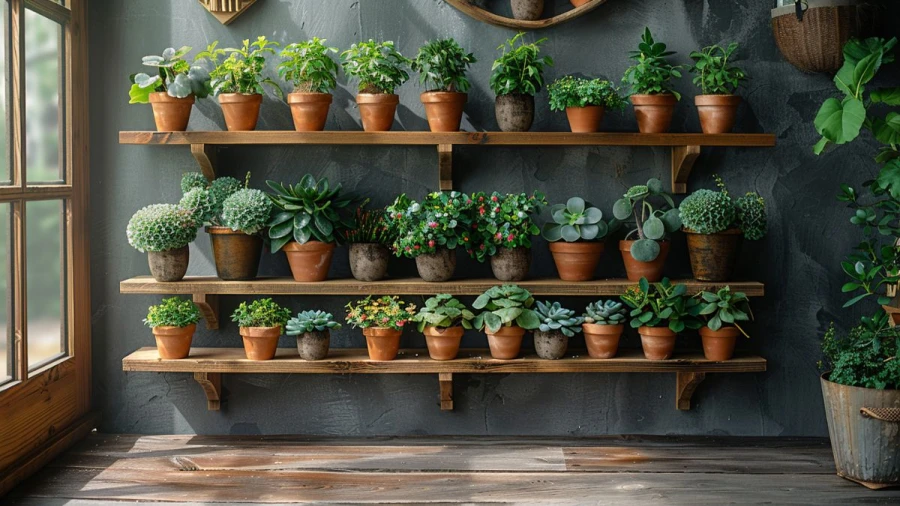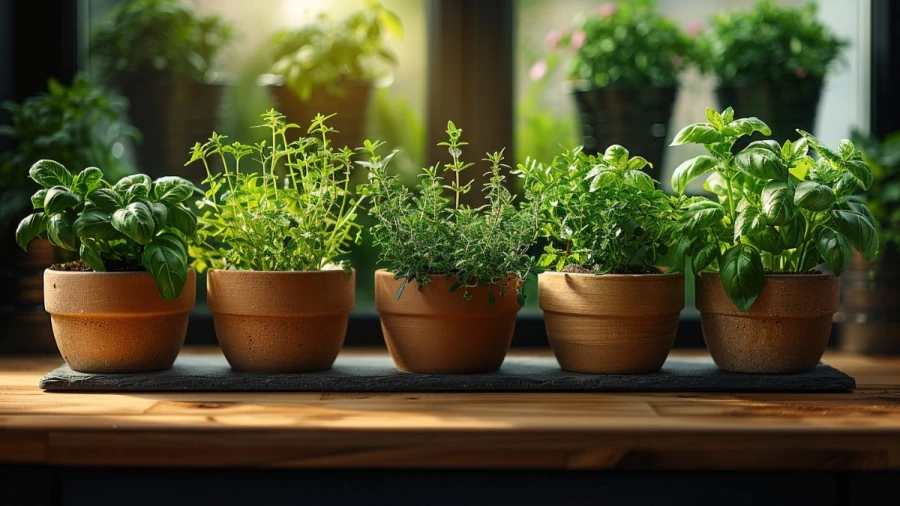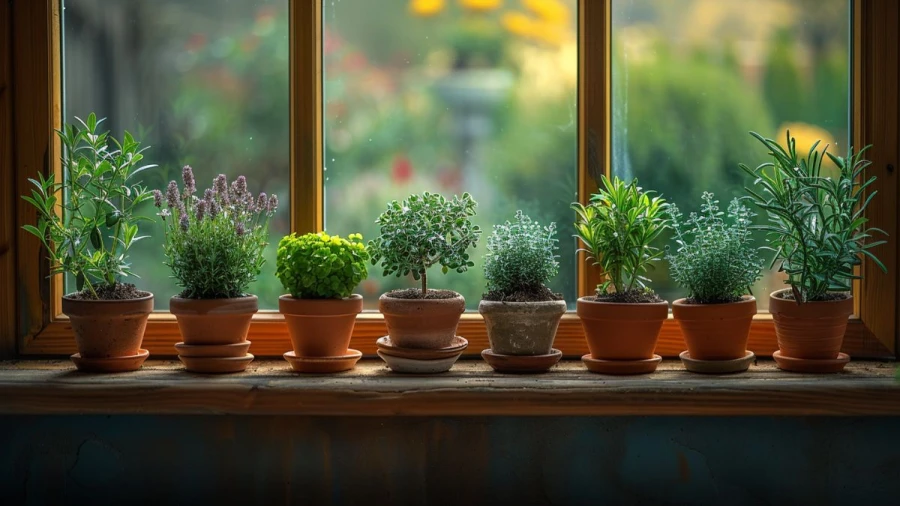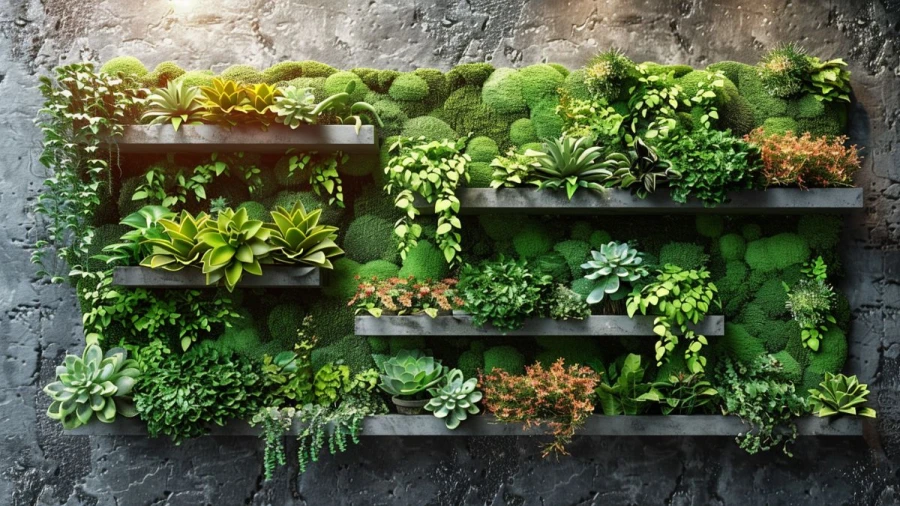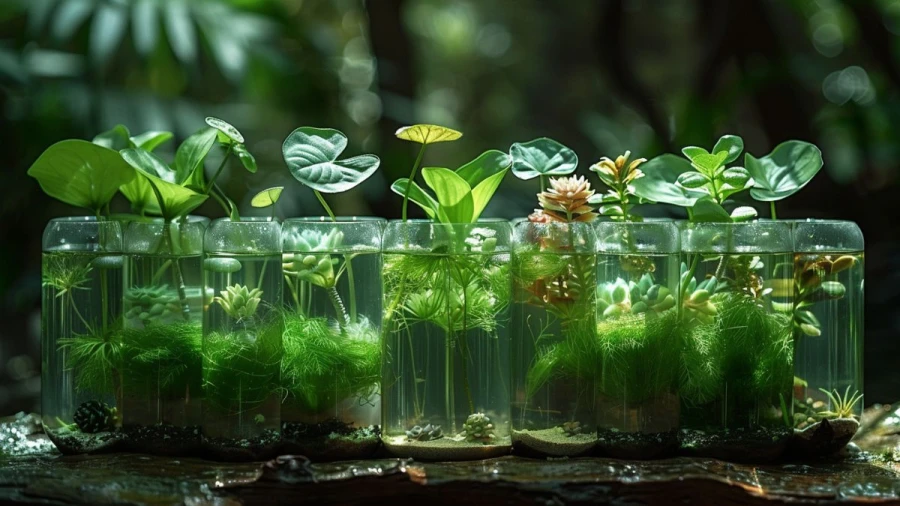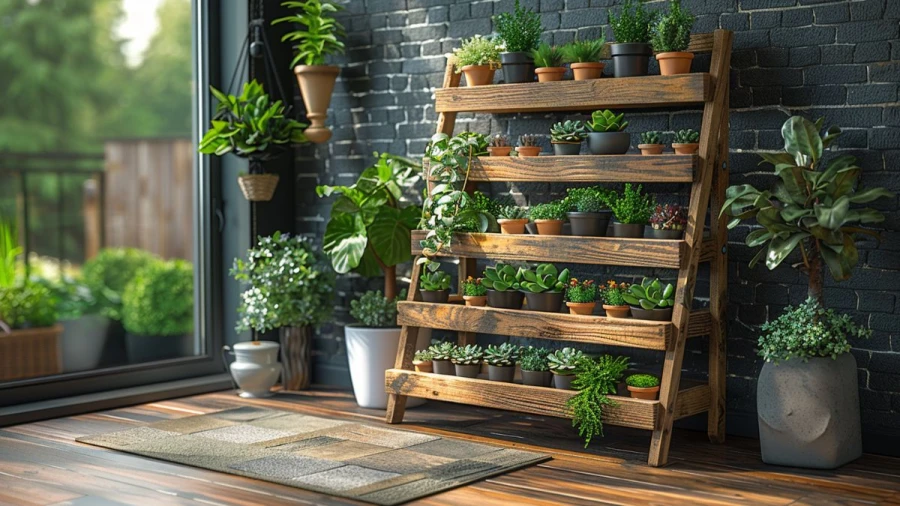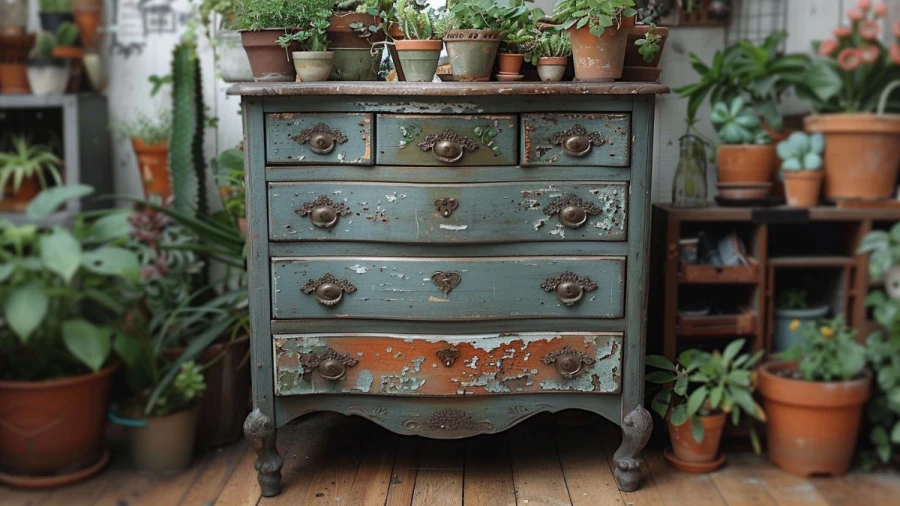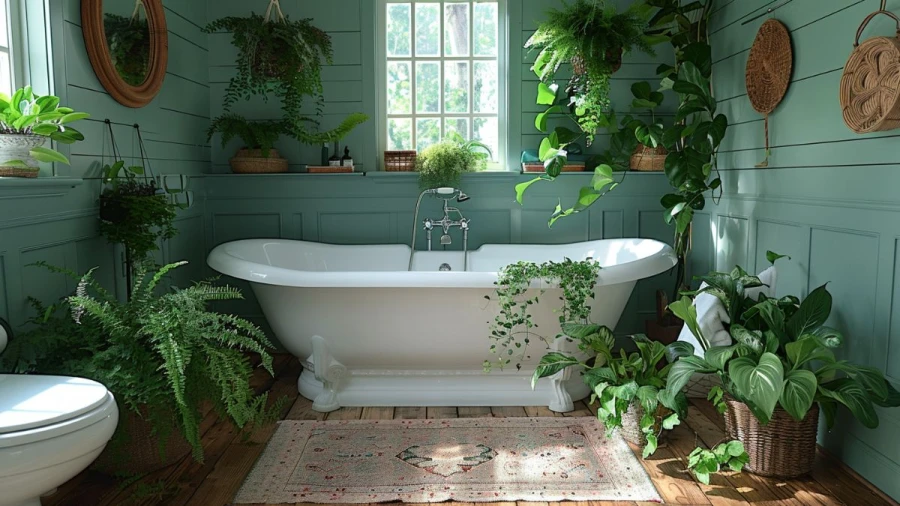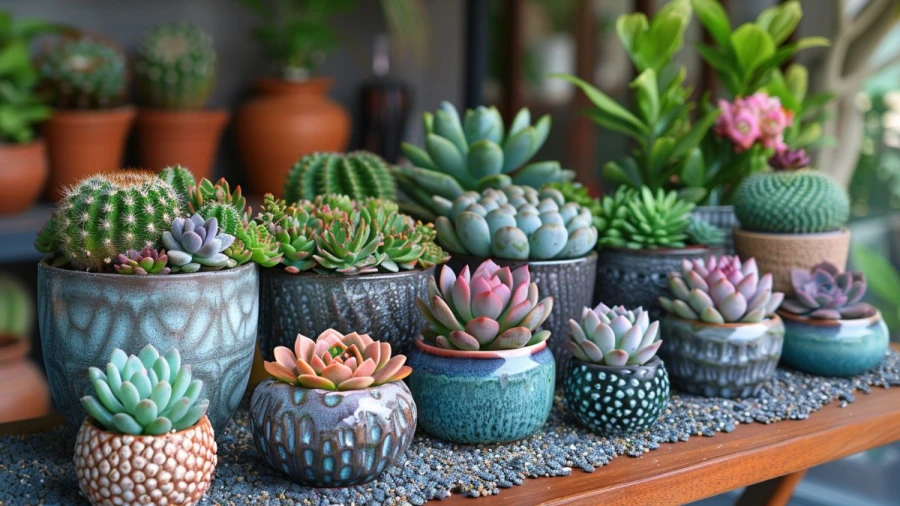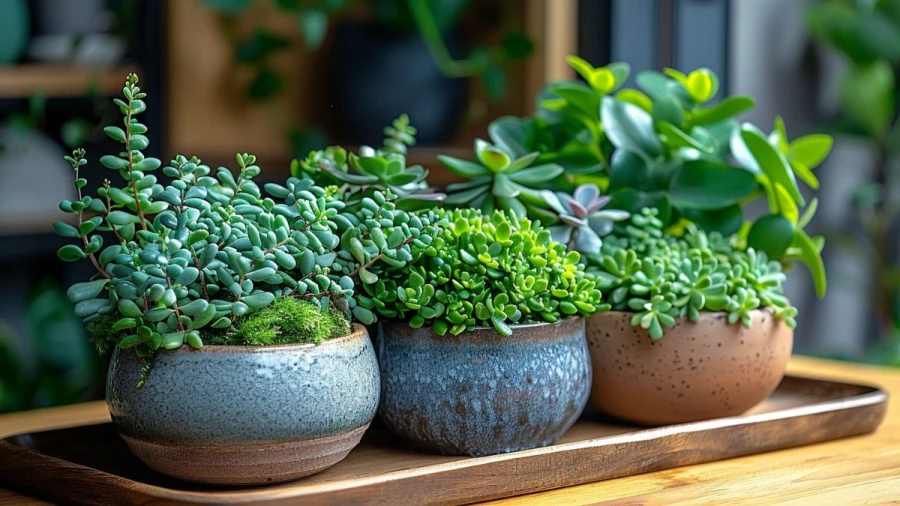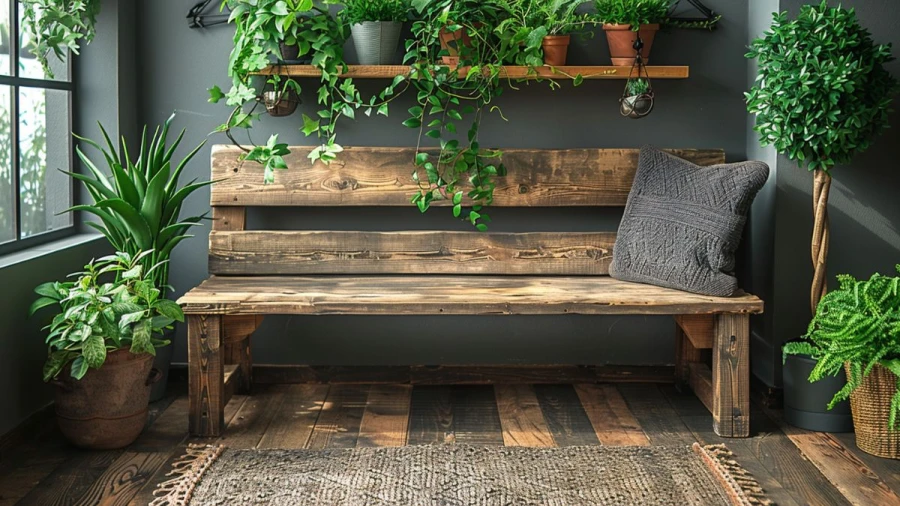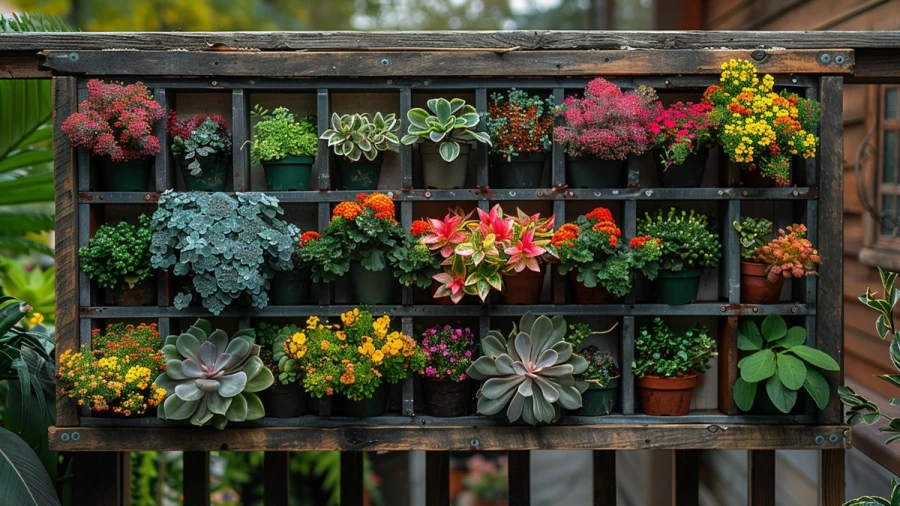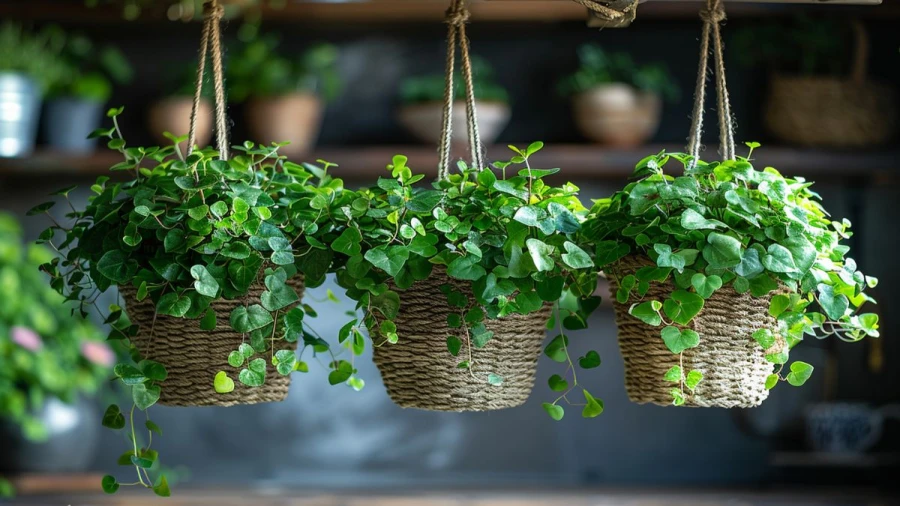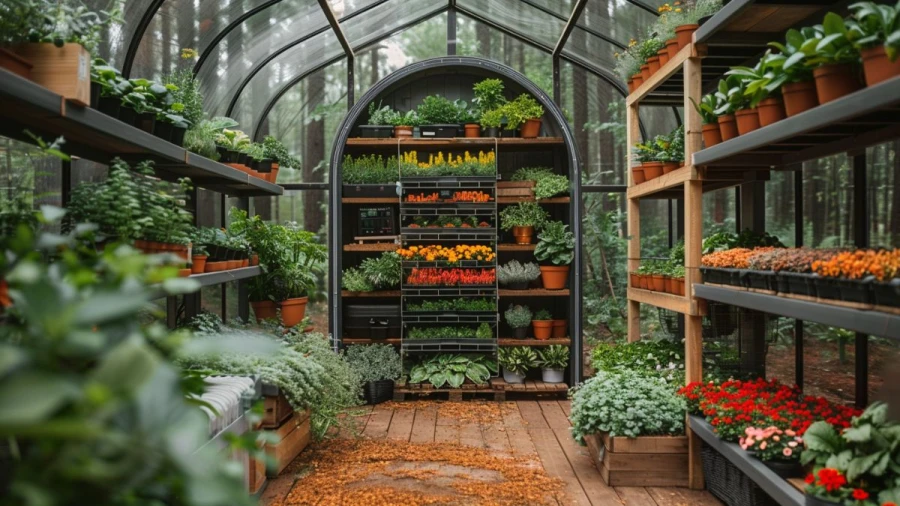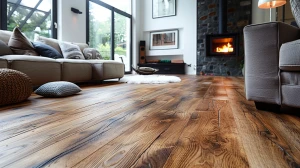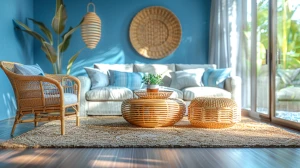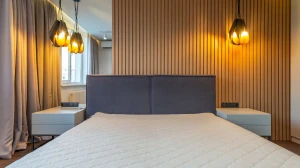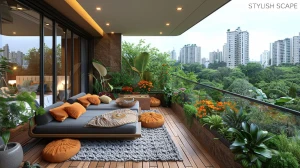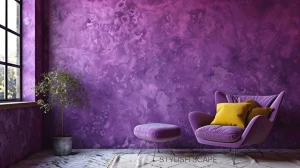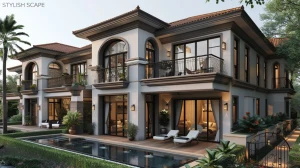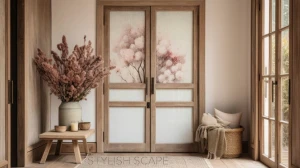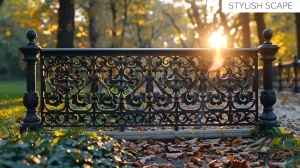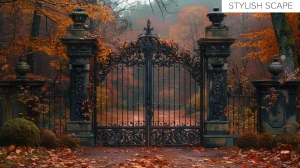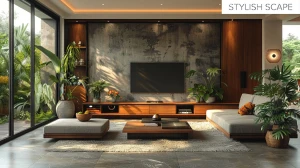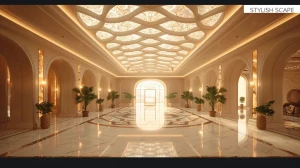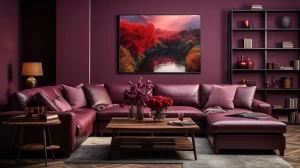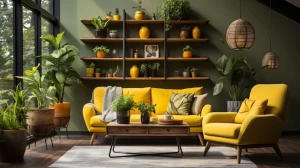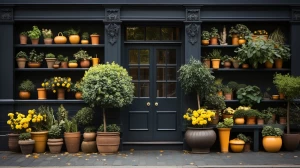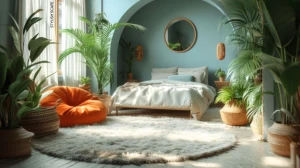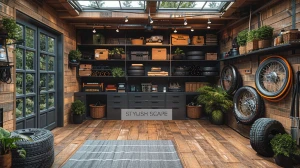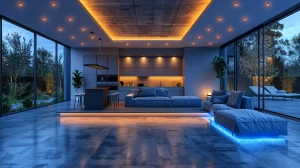
20 Inspiring Plant Room Ideas to Green Up Your Space
Explore 20 easy and inspiring plant room ideas to turn your space into a green paradise. These tips will help you create a lively indoor garden with stylish plant displays and arrangements.
by Maivizhi A
Updated Aug 06, 2024
On This Page
- Vertical Gardens
- Hanging Planters
- Plant Shelves
- Indoor Herb Garden
- Plant Stands
- Window Sills
- Plant Wall Art
- Aquarium Planters
- Plant Ladder
- Repurposed Furniture
- Bathroom Oasis
- Hanging Gardens
- Cacti and Succulent Garden
- Plant Table Centerpiece
- Garden Bench
- Plant Frame
- Hollowed Logs or Stumps
- Suspended Planters
- Modern Planter Boxes
- Indoor Greenhouse
- How Can You Organize and Display a Variety of Plants in a Small Plant Room?
Vertical Gardens
Vertical gardens are a smart way to grow plants on walls, making the most of limited space. Instead of spreading out horizontally, plants are arranged in a vertical structure, like a wall-mounted frame or trellis. This approach can be used indoors or outdoors. For indoor spaces, you might use wall pockets or mounted planters, which are great for herbs or small flowers.
Outdoors, living walls can become stunning green features, covered in climbing plants or a mix of flowers. Vertical gardens help save space and can add a beautiful, lush touch to any area. They also improve air quality and can be a fun, eco-friendly project.
Hanging Planters
Hanging planters are a stylish and space-saving way to display plants. They are suspended from the ceiling or walls using hooks, ropes, or chains. This method allows you to keep plants off surfaces and creates a floating garden effect. Hanging planters are perfect for smaller spaces where floor area is limited.
They work well for trailing plants, like ivy or string of pearls, which can cascade beautifully. You can use them indoors to add greenery to any room or outdoors to decorate patios and balconies. Plus, they can be easily moved around to change up the look of your space.
Plant Shelves
Plant shelves are simple yet effective for organizing and displaying your plants. These shelves can be placed against walls, in corners, or as standalone units. They come in various sizes and styles, from small floating shelves to larger, tiered units. Plant shelves help keep your plants organized and create a lovely green display.
They’re ideal for both indoor and outdoor settings, allowing you to arrange a variety of plants at different heights for visual interest. You can use them to grow herbs in the kitchen, houseplants in the living room, or succulents on a balcony. This setup maximizes your space and adds a natural touch to your decor.
Indoor Herb Garden
An indoor herb garden is a small, contained space where you grow herbs inside your home. It’s perfect for adding fresh flavors to your cooking without having to go to the store. You can set up an indoor herb garden in various ways, like using pots on a windowsill, hanging planters, or even special indoor garden kits.
Herbs like basil, parsley, and mint are popular choices because they grow well indoors. To create one, choose a sunny spot or use grow lights to ensure your herbs get enough light. Make sure to use good-quality potting soil and water the herbs regularly. An indoor herb garden not only provides fresh herbs but also adds a touch of greenery and a pleasant scent to your home.
Plant Stands
Plant stands are elevated platforms designed to hold and display potted plants. They come in various styles and materials, like wood, metal, or ceramic, and help organize your plants in a decorative way. By using plant stands, you can create a tiered arrangement that makes it easier to see and access all your plants.
They’re also useful for keeping plants off the floor and away from pets or children. Plant stands can be placed in various locations, such as near windows, in corners, or even as a focal point in a room. They help maximize space and add a stylish touch to your indoor plant setup. Choose stands that fit your room’s décor and the size of your plants for the best results.
Window Sills
Window sills are the horizontal ledges at the bottom of windows, which can be perfect spots for growing plants indoors. They receive natural light from outside, making them an ideal place for light-loving plants like succulents, herbs, or small flowering plants. To use a window sill for plants, ensure the sill gets enough sunlight—south-facing windows usually provide the most light.
Choose pots that fit comfortably on the sill and use saucers to catch excess water. This setup not only brightens up your space but also provides a convenient way to tend to your plants. Window sills can be a charming and practical addition to any room, helping you enjoy the benefits of indoor gardening.
Plant Wall Art
Plant Wall Art is a creative way to integrate greenery into your decor. It involves arranging plants on a wall or a panel to create visually appealing designs. You can use various plant types, from small succulents to trailing vines. Some setups use wall-mounted frames or shelves, while others might have pockets or grids where plants grow.
This idea adds a natural touch to your space and acts as a living artwork. It's perfect for making a room feel fresher and more vibrant. Additionally, plant wall art can be customized to fit your style, whether you prefer a lush, tropical look or a minimalist arrangement. It’s not only beautiful but also functional, improving air quality and bringing a bit of nature indoors.
Aquarium Planters
Aquarium Planters combine aquatic and terrestrial plants in a single setup. This concept involves using a glass aquarium or similar container to grow plants, both aquatic and land-based. The bottom part of the aquarium can hold water for aquatic plants like water lilies, while the upper part features soil for terrestrial plants.
This setup creates a mini ecosystem where plants help each other thrive. The water plants filter and clean the water, while the land plants can absorb excess moisture. Aquarium planters are not only visually striking but also educational, showcasing the balance and harmony of natural environments. They make a great conversation piece and bring a unique touch to your home or office.
Plant Ladder
A Plant Ladder is a stylish way to display multiple plants in a tiered arrangement. It typically consists of a ladder-like structure with shelves or steps where you can place different types of plants. This design helps maximize space, making it ideal for small areas or corners that need a bit of greenery.
The ladder can be made from various materials like wood, metal, or bamboo and comes in different sizes and styles. By arranging plants at different heights, you create an attractive visual effect and ensure that each plant gets adequate light. Plant ladders are easy to move and can be customized to fit your home decor, adding a fresh and natural element to any room.
Repurposed Furniture
Repurposed furniture involves taking old or unused pieces of furniture and giving them a new life as plant displays. Instead of buying new plant pots, you can use things like wooden chairs, old dressers, or even metal bed frames to hold your plants. For example, you could place a few small pots on the seat of an old chair or use the drawers of a dresser to create a mini indoor garden.
This not only saves money but also adds a unique touch to your plant setup. Plus, repurposing furniture is a great way to recycle and be creative with what you already have. You can paint or decorate the furniture to match your style, making it both functional and stylish.
Bathroom Oasis
Creating a bathroom oasis involves turning your bathroom into a relaxing space with the help of plants. Start by choosing plants that thrive in the bathroom’s humid environment, such as ferns or peace lilies. Place them on shelves, windowsills, or hanging planters to add greenery and a touch of nature.
You can also use larger plants in corners or near the bathtub to create a spa-like atmosphere. Adding plants not only improves the bathroom's appearance but also helps to purify the air and make the space feel more tranquil. Combine the plants with soft towels and calming scents to complete the transformation into your own personal retreat.
Hanging Gardens
Hanging gardens involve growing plants in suspended containers or planters, which can add a fresh and modern touch to your space. You can hang plants from the ceiling, wall-mounted brackets, or even create a vertical garden by using a series of hanging pots. This method saves floor space and allows you to display plants in a visually appealing way.
Choose trailing plants, like pothos or ivy, that look beautiful when they cascade down. Hanging gardens are great for adding greenery to small spaces or creating a lush, eye-catching feature in larger rooms. They also make it easier to care for plants, as they are often at eye level and easy to reach.
Cacti and Succulent Garden
A Cacti and Succulent Garden is a low-maintenance way to add greenery to your plant room. Cacti and succulents are perfect because they require very little water and can thrive in bright, sunny spots. To create this garden, you can use a variety of cacti and succulents of different shapes and sizes. Plant them in a large, shallow container with good drainage.
You might choose a mix of tall, spiky cacti and plump, rounded succulents for visual interest. Add some decorative gravel or sand on top of the soil to enhance the look and help with drainage. This type of garden is ideal for people who love plants but don’t have a lot of time for frequent care. Plus, it brings a touch of desert beauty into your space.
Plant Table Centerpiece
A Plant Table Centerpiece adds a natural touch to any table or desk. To create one, start with a sturdy, attractive tray or container. Choose a variety of small plants that have different textures and colors, like a mix of trailing vines, small succulents, or low-growing ferns. Arrange the plants in the container, making sure to leave space for growth.
You can add decorative elements like stones, small figurines, or moss to make it more visually appealing. This centerpiece not only brightens up your table but also creates a calming, green environment. It’s perfect for adding a touch of nature to your home or office and can be a great conversation starter.
Garden Bench
A Garden Bench is a charming addition to your plant room, offering both functionality and style. You can use it as a space to sit and enjoy your plants or as a display area for your plant collection. Choose a bench that complements the style of your room—whether it’s a rustic wooden bench, a sleek modern design, or something with intricate details.
Place it near your plant area, and consider adding cushions or throws for extra comfort. You can also use the bench to showcase smaller plants or gardening tools. This piece not only provides a practical seating option but also enhances the overall look of your plant room, making it a more inviting and enjoyable space.
Plant Frame
A plant frame is a creative way to display plants by using a structured frame or grid. Imagine a large, rectangular frame made from wood or metal, with rows of wire or mesh stretched across it. You can place small pots or containers with plants in these rows, creating a vertical garden.
This idea is great for adding greenery to walls or fences, especially in small spaces where floor space is limited. Plant frames can be customized in size and shape to fit your space and can be used indoors or outdoors. They also make it easy to organize different types of plants and can be a stylish focal point in your home or garden.
Hollowed Logs or Stumps
Hollowed logs or stumps are a natural and rustic way to use tree parts as plant containers. After cutting a log or stump and removing the inside, you can fill it with soil and plant your favorite flowers, herbs, or small shrubs. This method gives a charming, woodland feel to your garden.
You can place these logs or stumps directly in the ground or use them as standalone planters. They work well in both garden beds and on patios or decks. As the wood naturally ages, it adds character and blends beautifully with outdoor environments, creating a natural, eco-friendly look.
Suspended Planters
Suspended planters are a fun and space-saving way to grow plants by hanging them from above. You can use hanging baskets, macramé plant hangers, or decorative brackets to suspend your plants. This idea works well for indoor spaces like kitchens or living rooms, as well as outdoor areas like patios or balconies.
By hanging plants, you free up floor space and create a floating garden effect. It also allows you to display plants at different heights, adding visual interest to your space. Suspended planters can be used for a variety of plants, including trailing vines and cascading flowers, enhancing both style and greenery in your home.
Modern Planter Boxes
Modern planter boxes are stylish containers used to grow plants. They often have a sleek, minimalist design that fits well with contemporary decor. Made from materials like metal, wood, or concrete, these planters can come in various shapes and sizes, from rectangular to cylindrical.
Some even feature built-in irrigation systems, making it easier to water your plants. They’re great for both indoor and outdoor use, and can be placed on patios, balconies, or inside your home. Modern planter boxes can add a touch of elegance to any space while helping you grow herbs, flowers, or small shrubs.
Indoor Greenhouse
An indoor greenhouse is a space where you can grow plants inside your home, regardless of the weather outside. It’s usually a small, enclosed area with glass or clear plastic walls that let in sunlight while protecting plants from drafts and pests. Indoor greenhouses help create a controlled environment, ideal for growing herbs, vegetables, or exotic plants.
They often come with shelves or racks to organize your plants and can include heating and lighting systems to ensure the right conditions for growth. Using an indoor greenhouse allows you to enjoy gardening year-round and have fresh produce or beautiful plants indoors.
How Can You Organize and Display a Variety of Plants in a Small Plant Room?
Organizing and displaying a variety of plants in a small plant room can be both fun and challenging. Here are some tips to help you make the most of your space:
Use Vertical Space
Shelving: Install wall-mounted shelves or use tall plant stands to keep plants off the floor.
Hanging Planters: Hang plants from the ceiling or walls to add greenery without taking up floor space.
Wall-Mounted Planters: Utilize wall-mounted pockets or planters for a stylish display.
Opt for Multi-Tiered Plant Stands
Choose plant stands with multiple levels to maximize space and display a variety of plants at different heights.
Incorporate Corner Shelves
Use corner shelves to make use of unused space and display plants in a compact area.
Create a Plant Ladder
Use a ladder-style shelf to display plants in a tiered fashion, saving space while creating an attractive focal point.
Group Plants by Type
Group plants with similar care needs together to simplify maintenance and create visually appealing clusters.
Use Decorative Containers
Choose attractive pots and containers to enhance the overall look of your plant room and complement your decor.
Consider Space-Saving Furniture
Use furniture pieces like a plant stand with storage or a console table with shelving to combine functionality and display.
Utilize Windowsills
Place plants on windowsills to take advantage of natural light and keep them easily accessible.
Incorporate a Plant Wall
Install a vertical garden or living wall system to create a lush, space-saving display.
Use Adjustable Lighting
Install adjustable grow lights to ensure all plants receive adequate light, especially if natural light is limited.
Rotate Plants
Rotate plants periodically to ensure all receive equal light and attention.
Use Plant Carts
Rolling plant carts can be moved around for better light exposure and can also serve as a display unit.
By employing these strategies, you can effectively organize and display a diverse range of plants in a small space while enhancing the room's aesthetic appeal.
